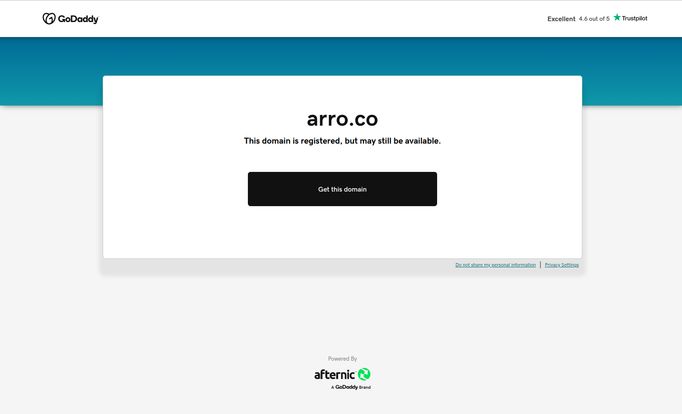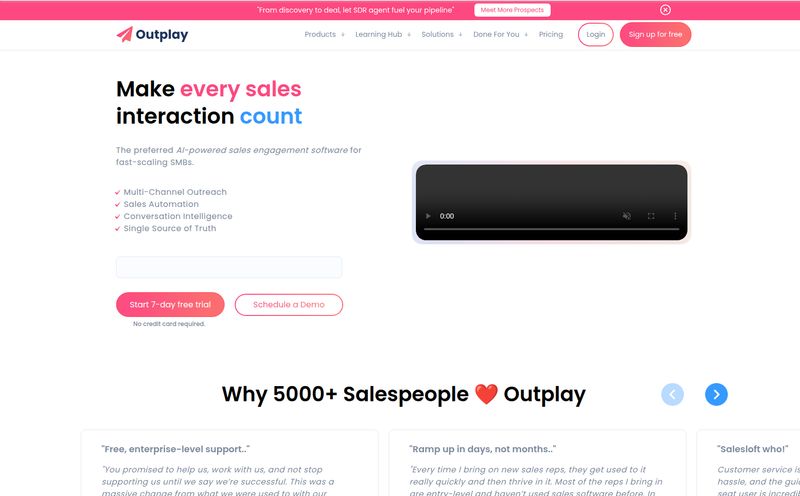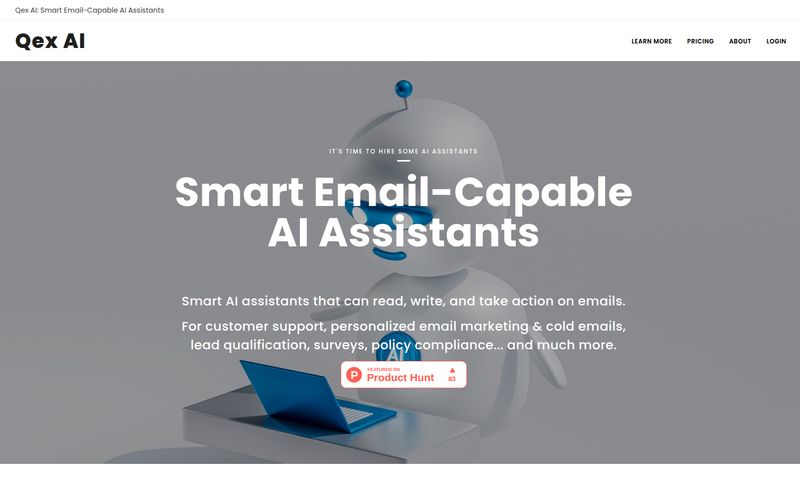For years, I’ve been sitting in meetings, listening to product managers, marketers, and founders all lament the same thing: the painful gap between wanting customer feedback and actually getting it. We all know we should be doing continuous discovery. We all nod along when someone on a podcast mentions talking to users every single week. But who has the time? Seriously. Between sprint planning, bug bashes, and the ten thousand other things on our plates, scheduling and conducting user interviews often falls by teh wayside.
It becomes this dreaded, time-sucking task that we know is important, but it’s just so… manual. So when a tool pops up on my radar claiming to be an “AI research assistant for product teams,” my ears perk up. The tool in question is Arro. The promise? To automate customer insight collection and let you run user interviews at scale. It sounds like the holy grail for product development, doesn't it? But as an old hand in this game, I’ve learned to temper my excitement with a healthy dose of skepticism. So, let’s dig in and see if Arro is the real deal.
So What Is Arro, Exactly?
Think of Arro as a tireless, multilingual intern you can unleash on your user base. At its heart, Arro is an AI platform that uses conversational interfaces—think smart chatbots—to conduct user interviews for you. Instead of you or your UX researcher spending hours on Zoom calls, you can embed an Arro conversation on your website or app. It then engages with your customers, asks them targeted questions, and collects all that juicy qualitative data while you sleep. Or while you're in another meeting. You get the idea.
The goal here isn't just to replace surveys. We’ve all got Typeform or SurveyMonkey for that. Arro aims to bridge the “research gap” by providing the depth of an interview with the scale of a survey. It's designed to facilitate that continuous discovery process we all aspire to, making it a background task rather than a full-time job. A pretty compelling pitch, I have to admit.
The Big Problem Arro Tries to Solve
The classic product development dilemma is that the people who need customer insights the most (the product team) are often the ones with the least amount of time to get them. Traditional user research is amazing. I’m a huge advocate for it. But it doesn’t scale. You can't personally interview 500 users about a new feature concept in a single afternoon. It's just not feasible.
This creates a bottleneck. Decisions get made based on gut feelings, assumptions, or the opinion of the loudest person in the room. Arro steps into this chaos and offers a different path. By automating the initial data collection, it frees up the product team to focus on the more strategic part: analyzing the insights and turning them into actionable product opportunities. It's about making data-driven decisions the default, not the exception.
A Look at Arro's Key Features
Okay, let's get into the nuts and bolts. What’s under the hood? Based on what I've gathered, the platform is built around a few core components that work together.
AI-Powered User Interviews at Scale
This is the main event. Arro uses AI to have natural, flowing conversations with your users. You can embed its secure web snippet anywhere you can reach your customers. The idea is to catch them in the moment, when their feedback is most raw and relevant. And because it's an AI, it can run thousands of these interviews simultaneously, 24/7, in multiple languages. That multilingual support is a huge plus for any company with a global user base.
Templates and Smart Starts for Easy Setup
Nobody wants to start from a blank page. It seems Arro understands this, offering a gallery of conversation templates for common use cases like feature feedback, persona development, or churn analysis. This lowers the barrier to entry, so you don't have to be a seasoned UX research expert to get started. You can just pick a template, tweak it to your needs, and go. A very smart move.
Collaboration and Insight Sharing
Research is useless if it lives in a silo. Arro appears to have built-in team collaboration features. This means your entire product squad—PMs, designers, engineers—can access the interview data, see the emerging themes, and contribute to the analysis. It turns research from a one-person show into a team sport, which is exactly how it should be. The more eyes on the data, the richer the insights.
AI-Driven Analysis (This is the Magic)
Collecting data is one thing; making sense of it is another beast entirely. This is where Arro’s AI promises to do some heavy lifting. After conducting the interviews, the platform analyzes the conversational data to identify patterns, themes, and potential product opportunities. It essentially gives you a highlight reel of what your customers are saying, saving you from having to read through hundreds of transcripts. If this works as advertised, it's a massive time-saver and the true value of the platform.
The Good, The Bad, and The AI
No tool is perfect. As much as I'm intrigued by Arro, it’s important to look at both sides of the coin. Let's break down the potential upsides and the things that give me pause.
On one hand, the benefits are clear. You get to collect customer feedback at a scale that was previously unimaginable for qualitative data. You get deep, nuanced insights without sacrificing your team's entire week. The easy setup and collaborative features make it accessible, and the AI analysis could genuinely change how teams build product roadmaps. It feels secure and safe, with built-in safeguards, which is always a concern when you're letting an AI talk to your customers.
However, there are a few things to keep in mind. First, Arro relies on OpenAI. This isn’t necessarily a bad thing—OpenAI’s models are powerful—but it means you're subject to their limitations, downtime, or any weird quirks their API might have. Second, the effectiveness of the whole system hinges on the quality of your prompts and templates. The old saying “garbage in, garbage out” is doubly true for AI. You'll still need to put in the strategic work upfront to make sure you're asking the right questions. Finally, for the AI to be truly accurate, it likely needs to be trained on your specific content and context, which might require an initial setup and learning curve.
What About the Pricing?
Here's where things get a bit mysterious. I couldn't find a public pricing page for Arro. This isn't uncommon for B2B SaaS tools targeting enterprise clients. It often means they operate on a custom quote basis, depending on your company's size, usage, and specific needs. You’ll likely have to get in touch with them for a demo and a personalized price. While I always prefer transparent pricing, this approach is pretty standard in the industry.
A Major Red Flag: The Case of the Missing Website
Okay, I have to address the elephant in the room. When I went to check out their website at arro.co, I was greeted by... a GoDaddy landing page. It says the domain is registered but might be available. Uh oh.

Visit Arro
Now, what could this mean? My inner SEO detective has a few theories.
1. They're in stealth mode or pre-launch and the marketing site isn't live yet.
2. They've recently pivoted or been acquired and the domain is in limbo.
3. They use a different domain entirely, and `arro.co` is just one they parked.
4. Something's gone wrong.
Whatever the reason, it’s not a great look. For a tech company, your website is your digital storefront. If potential customers can't find it, they can't buy your product. I'm hoping it's just a temporary glitch or they are active on another domain I haven't found yet, because the concept itself is too good to be DOA. It’s a bit of a head-scratcher and something you should definitely investigate if you're looking to try Arro out.
So, Who Is Arro Actually For?
Assuming the tool is alive and kicking somewhere, it's clearly built for modern product teams. I'm talking about:
- Product Managers who are starved for time but need constant user feedback to inform their backlog.
- UX Researchers who want to augment their qualitative studies with large-scale quantitative data without losing nuance.
- Startups and Scale-ups that need to move fast and validate ideas quickly without hiring a massive research department.
- Large Enterprises looking to systematize their product feedback loop across multiple teams and products.
If you're in one of these boats, the value proposition of Arro is probably making you nod your head right now.
Final Thoughts
The promise of Arro is incredibly compelling. The idea of an AI research assistant that closes the feedback loop and makes continuous discovery a reality is something the product world desperately needs. The feature set—from AI interviews to automated analysis—is spot on. It directly addresses the most significant pain points in modern product development.
However, the mystery of the missing website is a significant hurdle. It's tough to fully endorse a tool you can't see, touch, or even find online. My advice? Keep Arro on your watchlist. The concept is a 10/10. If they can sort out their online presence and deliver on their promises, Arro could be a genuine game-changer for how we build products. For now, I'm cautiously optimistic and very, very curious.
Frequently Asked Questions
What is Arro?
Arro is an AI-powered research assistant created for product teams. It automates the process of collecting customer insights by conducting user interviews at scale through conversational AI, helping to bridge the gap in continuous discovery.
How does Arro conduct user interviews?
Arro uses a secure web snippet that you can embed on your website or in your application. This snippet launches a conversational AI that interacts with your users, asking them questions based on pre-designed templates and prompts to gather qualitative feedback.
Is Arro suitable for global companies?
Yes, one of Arro's listed features is multilingual support. This allows it to conduct interviews and gather feedback from a diverse, global user base in their native language, making it a valuable tool for international companies.
Does Arro help with analyzing the data?
Absolutely. A core feature is its AI-driven analysis. The platform processes the raw interview data to identify key themes, user sentiments, and actionable product opportunities, presenting them to your team in a digestible format.
Is Arro's AI safe to use with customers?
According to its feature list, Arro is built to be a secure and safe AI with built-in safeguards. This is critical for maintaining user trust when deploying an AI to interact directly with your customer base.
How much does Arro cost?
Currently, there is no public pricing information available for Arro. This typically suggests a custom pricing model where you would need to contact their sales team for a quote based on your organization's specific needs.
Reference and Sources
The information for this analysis was compiled from product data sheets and industry knowledge. As of the time of writing, the primary website at `arro.co` was not operational. For the most current information, attempting to contact the Arro team directly through professional networks like LinkedIn may be the best approach.



